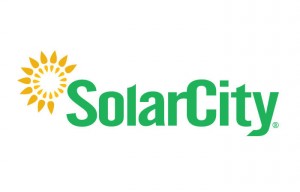Woodland Joint Unified School District (WJUSD), SolarCity and the UC Davis California Lighting Technology Center today announced completion of a model sustainability project that has brought solar power systems and energy-efficient lighting to Woodland High School and three elementary schools in the district: Whitehead, Maxwell, and Tafoya. Together, the new technologies are expected to save the district in California more than $20,000 on electricity costs in their first year of operation alone.
 This is the second round of solar projects SolarCity has completed for the district, bringing the number of sites in their solar portfolio up to 10. Previously, SolarCity installed solar arrays at the District Office, Gibson, Freeman, Plainfield, and Zamora elementary schools, and at Pioneer High School. The SolarCity arrays, which consist of more than 8,800 panels, will provide enough clean power to offset about 68 percent of electricity needs at the sites where solar panels are installed.
This is the second round of solar projects SolarCity has completed for the district, bringing the number of sites in their solar portfolio up to 10. Previously, SolarCity installed solar arrays at the District Office, Gibson, Freeman, Plainfield, and Zamora elementary schools, and at Pioneer High School. The SolarCity arrays, which consist of more than 8,800 panels, will provide enough clean power to offset about 68 percent of electricity needs at the sites where solar panels are installed.
“Woodland Joint Unified School District strives to serve as an example of environmental stewardship and fiscal responsibility,” said WJUSD Energy Manager Rob Hutchinson. “We see these new projects as a model for K–12 schools nationwide who want to spend less on energy bills while simultaneously contributing to the betterment of our environment. Solar power and the deployment of advanced lighting technologies are two tools that help us continue to decrease our operating costs as well as our carbon footprint.”
UC Davis’s California Lighting Technology Center (CLTC) assisted the district in selecting energy-efficient lighting for the solar-paneled carports at its four newest solar sites. The carport lighting consists of energy-efficient induction lighting from EverLast, equipped with motion sensors that reduce light levels when the area is vacant. Adaptive lighting also reduces light pollution and can enhance security.
“Energy-efficiency best practices and renewables must go hand-in-hand,” said CLTC Director Michael Siminovitch. “What seems like a subtle addition of motion sensors on the already efficient lighting reduces energy use by a significant amount. CLTC case studies show that this feature reduces energy use up to 50 percent compared to lighting that is on all the time, regardless of whether the area is occupied.”
Siminovitch added, “The pairing of solar canopies with adaptive lighting is a design standard at UC Davis and, now, at Woodland Unified. Hopefully, going forward, this will become the standard in K-12 schools across California.”
The solar arrays can provide more than 2,100 kW of solar generating capacity and allow the district to pay lower rates for solar electricity than it currently pays for utility power. WJUSD paid nothing up front for the solar systems, and the energy-efficient lighting was included in the monthly purchase of energy. SolarCity provides free installation, maintenance, and ongoing monitoring over the course of the 20-year Power Purchase Agreement (PPA). The solar electricity cost is also reduced by a performance-based incentive provided by PG&E and the California Solar Initiative.
The solar systems will prevent more than 57 million pounds of annual carbon dioxide emissions over the next 20 years, the equivalent of planting nearly 2.5 million trees or taking nearly 5,000 cars off the road.
“With today’s economic and environmental pressures, the status quo is no longer acceptable for California’s schools,” said SolarCity Project Development Manager Anastasia Beckett. “SolarCity is proud to partner with two such outstanding institutions to lead the way to a brighter, more efficient future for the Woodland Joint Unified School District.”
— Solar Builder magazine

Leave a Reply
You must be logged in to post a comment.